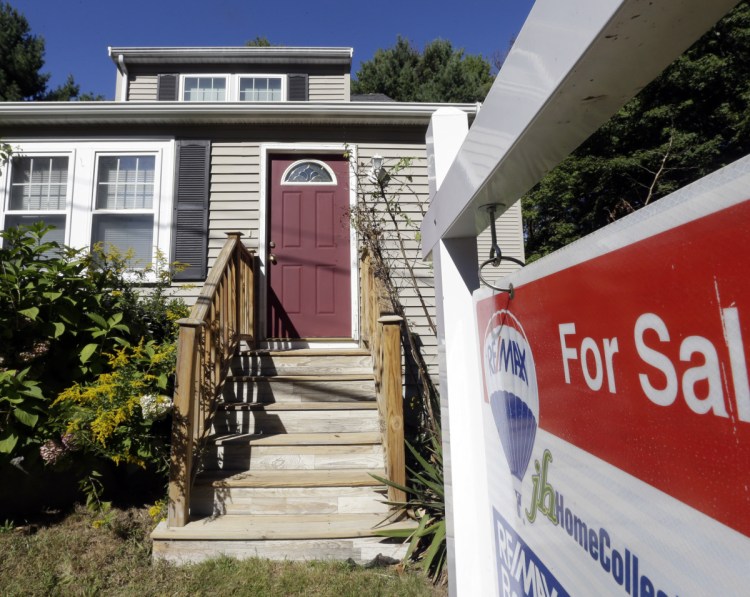Maine real estate agents believe the federal government shutdown that ended in late January contributed to a double-digit decline in sales of existing single-family homes in Maine.
However, a Maine banking industry leader noted that the number of pending home mortgages already had been shrinking in the months leading up to the shutdown, and that loan processing did not come to a halt while federal workers were on furlough.
Statewide home sales declined by nearly 13 percent in January compared with a year earlier, while the median home price remained the same.
In a report issued Thursday, the Maine Association of Realtors cited the 35-day shutdown as a contributor to the decline in sales.
“January 2019 statewide statistics show overall decline, though the 837 units sold is the fourth-highest January over the past 10 years,” Peter Harrington, president of the association and a broker/partner with Malone Commercial Brokers in Portland, said in a news release. “Time will tell how much of the January … decreases are attributable to the longest partial government shutdown in U.S. history, which ended on January 25th. The shutdown delayed or completely suspended some real estate transactions that were dependent on federal government-guaranteed loans.”
Maine home sales declined by 12.9 percent in January compared with a year earlier, while the statewide median home sale price of $200,000 was unchanged from January 2017, according to the association. The median price indicates that half of homes sold for more money and half sold for less.
Maine home sales have been trending downward over the past several months following a period of record sales growth. Real estate agents have said low housing inventory and economic uncertainty contributed to the decline, which was exacerbated by the shutdown in December and January.
Chris Pinkham, CEO of the Maine Bankers Association, said banks continued to process new mortgage loans during the shutdown, even those backed by government agencies such as the U.S. Federal Housing Administration, Department of Veterans Affairs and Department of Agriculture.
There just weren’t as many loans to process in January, he said.
“The pipeline had been shrinking during the fourth quarter of last year, generally,” he said. “It just wasn’t what it had been earlier in the year.”
Realtor John Fitzsimons, a buyer specialist with the Davin Team at Portside Real Estate Group in Portland, said his agency did not see any clients’ home closings delayed because of the shutdown. Still, he said a prolonged shutdown can slow home sales not only because of delays in loan processing, but also because it creates buyer uncertainty.
“When the government shuts down, I think uncertainty in general is going to affect our market,” Fitzsimons said.
Tom Cole, 2019 president-elect of the Maine Association of Realtors and sales director at Better Homes and Gardens Real Estate/The Masiello Group in Brunswick, said both the bankers and Realtors have valid points. He said the government shutdown did not directly affect processing for FHA and VA loans, but it did cause a temporary shutdown of the office that processes USDA Rural Development loans for homebuyers in Maine’s smaller communities.
“That’s a product that’s not used in Portland,” Cole said about USDA loans. “It’s only available, really, for towns like Brunswick and smaller. And that product is very popular among first-time buyers.”
For the three-month period ending Jan. 31, statewide home sales in Maine decreased by 7 percent compared with the same period in 2017, the report said.
The median sale price of homes for the three-month period from November through January was $215,000 – an increase of 7.5 percent from a year earlier.
Home sales were down in 10 of Maine’s 16 counties for the three-month period compared with the same period of 2017. The biggest sales decrease was 16 percent, in Oxford County, while the biggest increase was 8 percent, in Piscataquis County.
The biggest increase in median price for the three-month period was in Knox County, where the median increased by 25.5 percent from a year earlier to $255,000. The biggest price decrease was in Piscataquis County, where the median fell by 13 percent to $103,026.
In January, the Northeast experienced a 1.4 percent decrease in home sales, while the regional median sale price of homes rose by 0.4 percent to $270,000 compared with January 2017, the National Association of Realtors said.
Nationally, home sales fell by 8.4 percent in January from a year earlier, and the median sale price rose by 3.1 percent to $249,400, it said.
J. Craig Anderson can be contacted at 791-6390 or at:
Twitter: @jcraiganderson
Send questions/comments to the editors.



